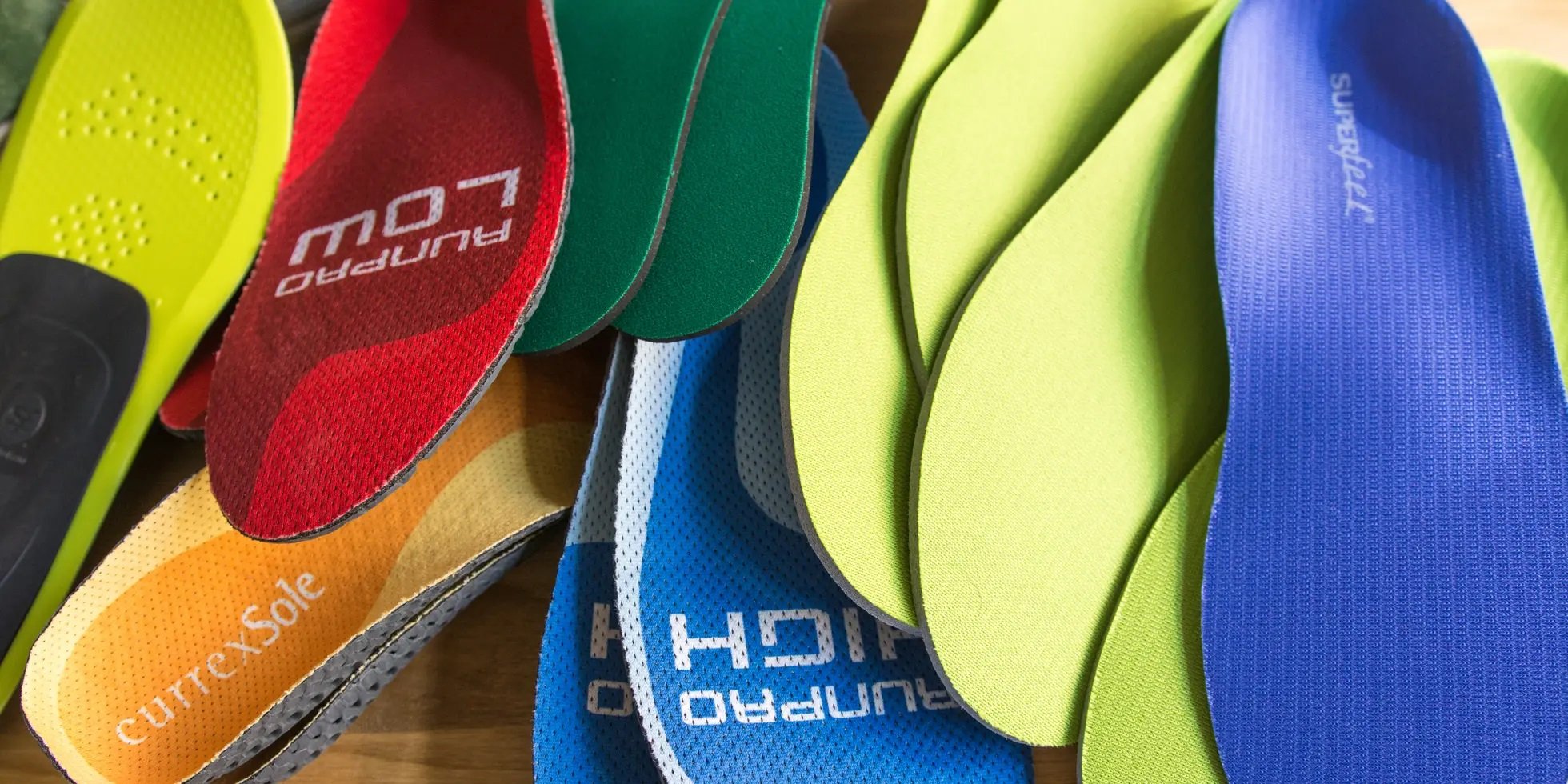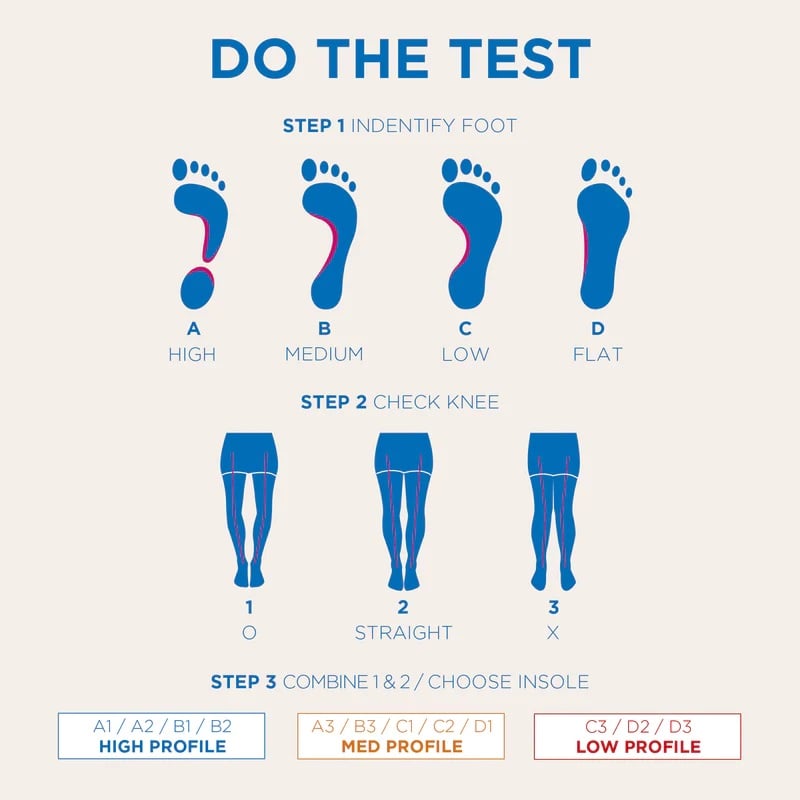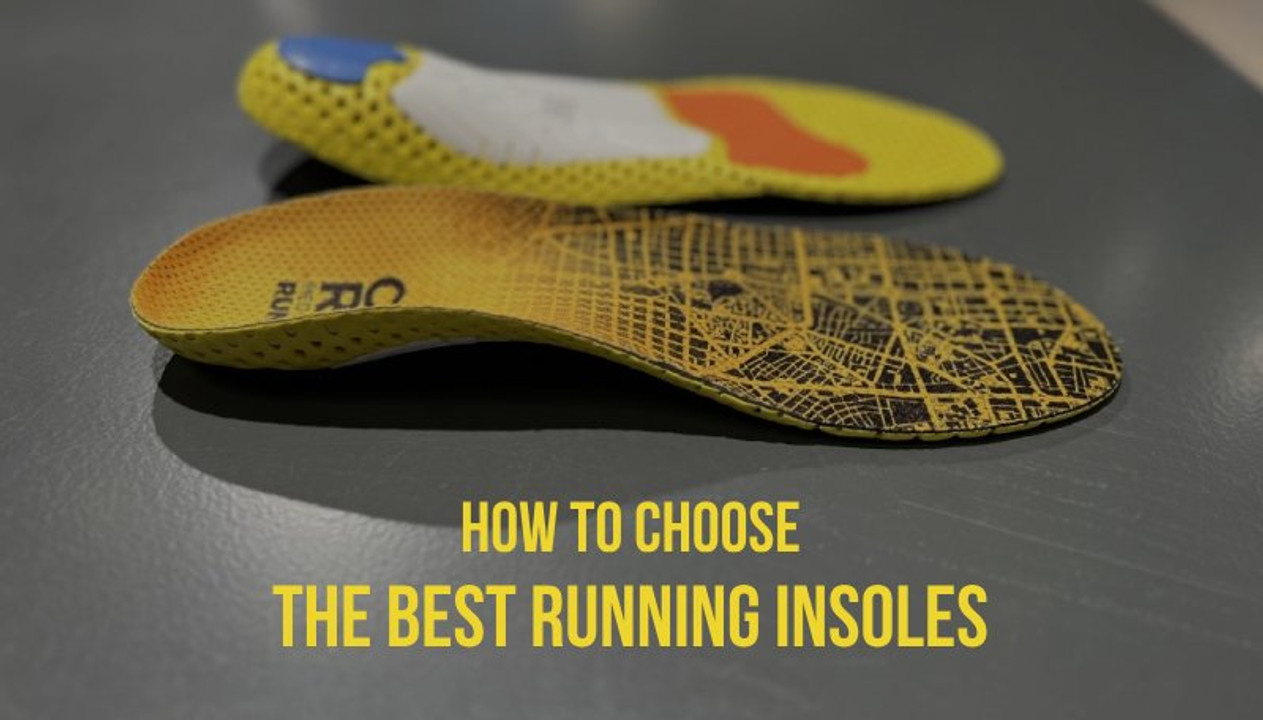The Best Insoles For Running Shoes | How To Choose
Originally, our feet were designed to walk barefoot on soft, uneven surfaces like grass or sand. But today, we're mostly pounding the pavement or other hard surfaces, and let's be honest, our feet aren't exactly thrilled about it. They're under a lot of pressure (literally) and can't always distribute it evenly. That's where running insoles come into play.
Running insoles help transfer that pressure away from high-pressure points, ensuring an even distribution as we trot along. Plus, they provide the support our arches need and help align our feet to reduce overpronation.
But how to find the right type? And do you need running insoles in the first place? Let’s find out!
Do You Need Running Shoe Inserts?
Well, that depends on a couple of things.
First off, how does your body feel after a run? If you're experiencing pain in your feet, shins, knees, or even your lower back, it could be a sign that your body isn't happy with how your feet are hitting the ground. Running shoe insoles can help correct this by providing a little extra cushion and support in areas you need it most.
Secondly, take a look at your running shoes - are they worn out unevenly? It could mean you're overpronating (your foot rolls inward) or supinating (your foot rolls outward). Both conditions can be characterized by specific arch types. For instance, severe overpronators often have flat feet or low arches, while supinators may have high arches that don’t absorb shock well. Overpronation and supination can lead to injuries if not corrected with running shoe inserts.
So, if you’re seeking to relieve pain or want more support, you need technical running shoe insoles.

Reasons to Buy Running Insoles: Foot Conditions
So, if you're experiencing pain, running insoles can provide relief from an existing condition. Additionally, they can offer support to your shoes, potentially preventing a condition from worsening or even occurring in the first place. However, as always, you should consult your doctor before attempting any treatments.
Pain Relief
Plantar Fasciitis: This ailment is marked by the inflammation of the plantar fascia, the dense tissue strip that links your heel bone to your toes across the base of your foot. It's a prevalent source of heel pain.
Achilles Tendinitis: This condition refers to the inflammation of the Achilles tendon, the tissue that binds your calf muscles to your heel bone. It usually occurs due to excessive use or a sudden escalation in workout rigor.
Shin Splints: This term refers to pain along the tibia, aka shin bone (the lower part of your leg between the knee and the ankle.) Shin splints often occur in runners who have recently increased their distance or intensity.
Runner's Knee (Patellofemoral Pain Syndrome): This condition is characterized by pain around the kneecap. It's often caused by overuse, injury, or muscle imbalances.
Stress Fractures: These are tiny cracks in a bone (the shin or feet) that occur over time due to repetitive force, often from overuse — such as repeatedly running long distances.
Iliotibial Band Syndrome (ITBS): This condition manifests as discomfort on the exterior aspect of the knee, caused by irritation in the iliotibial band - a sturdy collection of fibers extending from the hip to the knee's outer region.
Ankle Sprains: It can happen when the ankle is turned or twisted in an unusual manner, potentially stretching or rupturing the robust tissue bands (ligaments) that keep the ankle bones in place.
Structural Misalignment: If your body's alignment is off, it can manifest not only as foot pain but discomfort in the ankles, knees, hip, back, neck, or head.
Support
Overpronation: Pronation is a natural foot movement, but if your ankle rolls excessively, it's referred to as overpronation. This condition could put you at risk of injuries to the foot or ankle.
Flat feet: It’s a condition where the entire sole of your foot touches the ground when you stand. It can change the alignment of your legs, affecting your ankle, calf, knee, leg, and back.
Supination: This is when your weight rolls onto the outer edges of your feet.
Choosing the Right Running Insoles
Support Insoles vs. Cushioned Insoles
Arch support inserts, also known as 'orthotic insoles,' 'arch supports, or simply 'orthotics,' are specially designed insoles featuring a rigid or semi-rigid platform. They are crafted to help your foot retain its natural, healthy shape.
The primary focus of orthotics is on the key areas of the foot: the arch and the heel. Built-in arch support prevents the arch from collapsing, and the pronounced heel cup stabilizes your ankle. These features make running orthotics an excellent choice for warding off conditions like plantar fasciitis or arch pain. Moreover, orthotics promote natural foot movement, correcting overpronation or supination.
On the other hand, cushioned arch supports, also known as ‘cushioned insoles,’ are insoles designed to deliver flexible arch support to your shoes through their padded cushioning. Unlike orthotics, these insoles focus primarily on providing maximum cushioning. Arch cushions often also feature heel cups.
Cushioned supports are especially beneficial when the main objective is to alleviate foot fatigue, even though they still offer adequate support.
For individuals experiencing arch pain, overpronation, or supination, it's recommended to consider orthotics. The best running insoles for flat feet are also the support type.
However, if you're dealing with issues such as foot fatigue or shin splints, the cushioned insoles would be a more suitable insole option.
Arch Support Level
The level of support in running insoles is largely determined by the arch design:
- Flat arch support is ideal for runners with low arches or flat feet, preventing excessive pronation.
- Neutral/medium arch support offers a balance of flexibility and support, making it suitable for people with normal arches.
- High arch support is designed for runners with high rigid arches, providing stability and distributing pressure evenly across the foot.
Insole Volume
Insole volume refers to the amount of space an insole occupies within a shoe. For most running inserts, there’s a correlation between the volume and the arch shape.
High-volume running insoles are designed to take up more space inside a shoe, making them ideal for footwear with ample room. These are often designed for supinating runners and those having high arches.
Medium-volume running insoles offer are versatile and can be used in a variety of running shoes. They're an excellent choice for runners who don't have specific needs related to foot shape or running style.
Low-volume running insoles occupy less space inside the shoe, making them suitable for low-profile or tight-fitting running shoes. These insoles are best for runners having low arches.

Best Running Insoles
Currex RunPro insoles enhance your comfort and performance with features like a deep heel cup, dynamic arch support, and high-rebound cushioning. Their patented Dynamic Arch Technology (DAT) provides flexible yet firm arch support, reducing stress on joints and potentially preventing injuries. Available in low, medium, and high arch profiles, finding the perfect RunPro insole is straightforward.
Aetrex insoles for running, the Speed collection, in particular, feature lightweight cushioning in the center and a performance base for efficient energy return. Featuring Aetrex's signature arch support, this orthotic is designed to biomechanically align your body and alleviate common foot discomforts like plantar fasciitis, arch pain, and metatarsalgia.
Superfeet Run Cushion inserts enhance comfort in any running shoe, ideal for marathons. These are also the best running insoles for shin splints. They promote natural foot movement with Adaptive Comfort Technology, while AeroLyte Dual Comfort Foam softens impact, and an energizing heel cushion reduces fatigue. Available in low or high arch support, these insoles cater to various foot shapes.
If you're looking for running insoles for plantar fasciitis, the Sole Active is clinically proven to reduce plantar fascia strain by 34% and offer a flexible yet supportive solution to prevent excessive arch strain. Its deep heel cup provides stability, while the orthopedic base is moldable, meaning you can customize the fit by placing the insoles in the oven or seeing it adapt to your foot over a few days of wear. These are effective alternatives to custom orthotics.
FAQ
Why should I use running insoles?
Running insoles can help to reduce foot pain, provide arch support, improve running mechanics, and reduce the risk of injuries such as plantar fasciitis and shin splints.
How do I choose the right running insoles?
The right running insoles depend on your specific needs. Consider factors like your foot type (flat, neutral, high arch), the type of running you do (distance, speed, trail), and any specific discomfort or injury prevention needs you have.
Can running insoles improve my performance?
While they won't make you run faster directly, running insoles can enhance comfort and efficiency, which may lead to improved stamina and reduced fatigue. They can also help prevent injuries.
How often should I replace my running insoles?
This varies depending on how much you run, but the best running inserts can last through 2-3 pairs of running shoes.
What are the best running insoles for flat feet?
The best insoles for flat feet are running orthotics with sturdy low arch support.
What are the best running inserts for shin splints?
When dealing with shin splints, insoles that provide excellent cushioning can help alleviate discomfort.
EXPLORE POPULAR ARTICLES
-
Why Running Socks Are Actually the Best Gift for Runners
Dec 24th 2025Giving socks as a gift usually feels… safe. Boring, even. It’s the backup plan when you don’t know w
-
Join Our X-Mas Blind Box Shenanigans
Dec 22nd 2025Remember that feeling? Sitting on the floor, shaking a wrapped box, trying to guess what’s inside? T
-
Run Bright, Stay in Sight: Reflective Gear for Night Running
Dec 10th 2025When winter comes, the days get shorter, and the sun sets before we’re done with our day. If you’re






